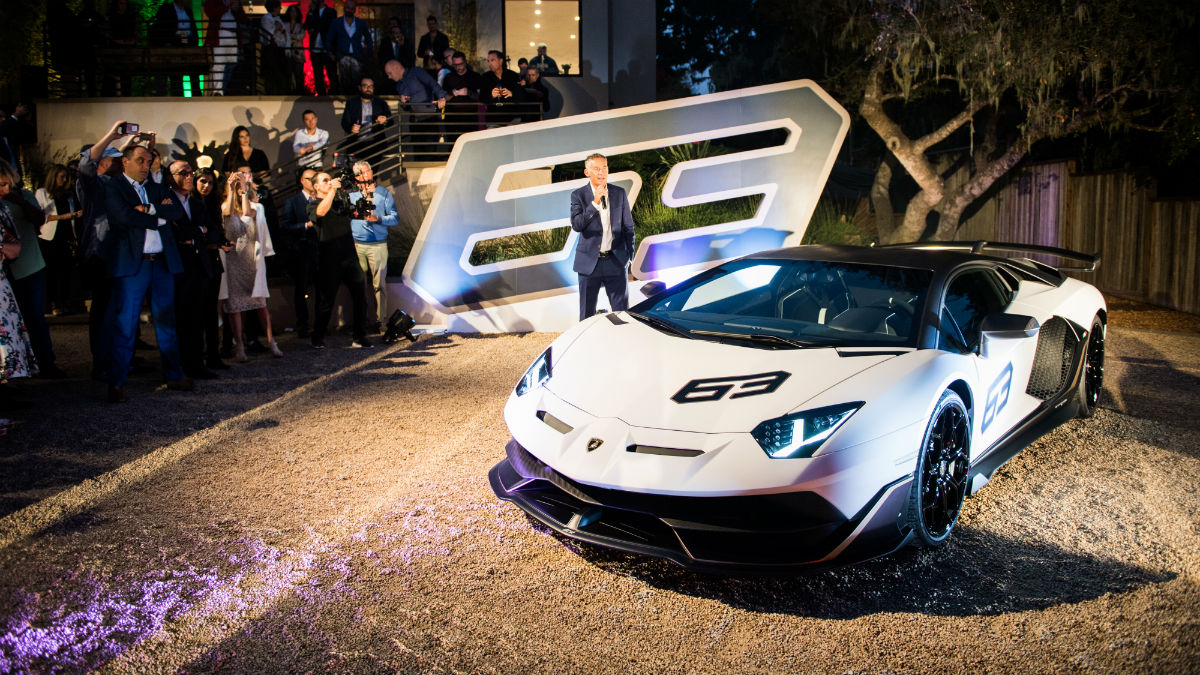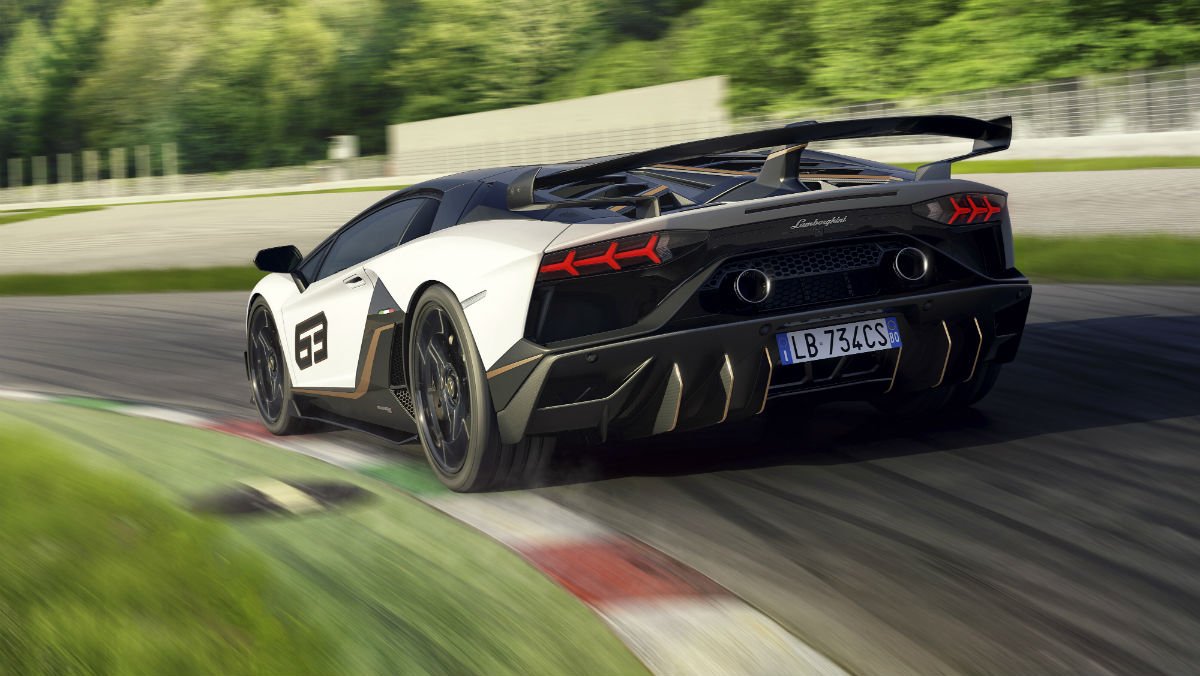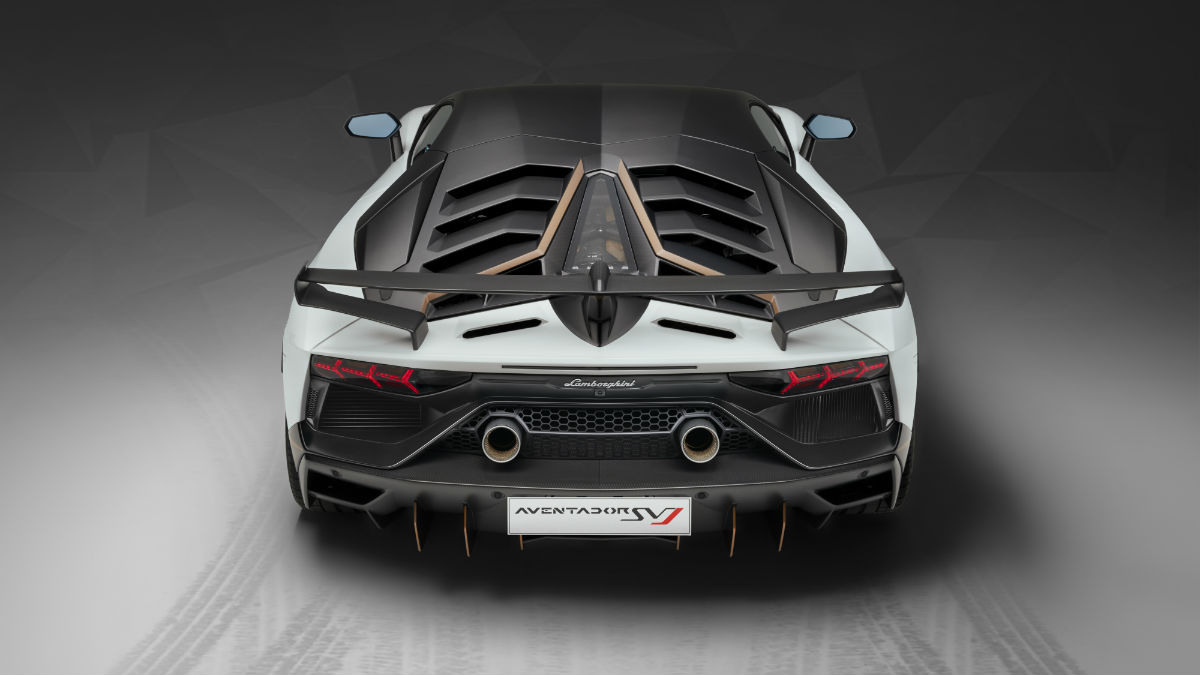This week at The Quail Motorsports Gathering in Monterey, California, Lamborghini took the wraps off its most extreme Aventador yet.
Since the Aventador went on sale in 2011, Lamborghini has slow-rolled higher performance variants to maintain excitement for its range-topping model. Now, as the supercar ages out of existence (a successor is likely due in the next year or two), the Italian automaker is giving the Aventador a proper farewell.
Dubbed the SVJ (Super Veloce Jota), the ultimate Aventador packs more power and sophisticated technology than any preceding version. About a year ago, Lamborghini’s Huracan Performante set the production car lap record at the famed Nurburgring, with a time of 6 minutes and 52 seconds, but Porsche’s 911 GT2 RS has since reclaimed the title of “Ring King.” Now the crown returns to Lamborghini.
With a record run of 6 minutes and 44 seconds, the Aventador SVJ (piloted by Marco Mapelli) stomped the “Green Hell” track. To conquer the circuit faster than ever before, the SVJ uses an adapted version of the Huracan Performante’s ALA (Aerodynamica Lamborghini Attiva), four-wheel steering, and a more potent version of the Aventador’s 6.5-liter naturally aspirated V12 engine.
Though the Aventador SVJ will no doubt weigh more than the 911 GT2 RS, it makes significantly more power (770 horsepower to the GT2’s 700) and its aerodynamic system is more advanced. Instead of using an adjustable rear spoiler like McLaren’s 720S supercar, ALA uses four active valves — two integrated within the front splitter and two within the rear engine cover — to trap or channel airflow. When the flaps closed, the trapped air adds downforce to the front and rear end. When the flaps open (via throttle input), air travels freely through the channels to minimize drag. Notably, the rear channel funnels air underneath the spoiler to, in effect, cancel its natural pull.
ALA has another trick. Through something the automaker calls “aerovectoring,” opening or closing valves on the left or right side of the car create downforce on the inner wheels while cornering. On a left-hand turn, for example, left valves will close and right valves will open, reducing required steering input, improving grip, and helping the car pivot. In this way, aerovectoring has a similar effect as torque vectoring without the heavy mechanical components.
A special edition, named SVJ 63, will be unveiled on the concept lawn at the Pebble Beach Concours d’Elegance. It pays homage to Lamborghini’s founding year of 1963 and features extensive use of carbon fiber. Fittingly, the SVJ 63 will represent just 63 of the 900 SVJ models Lamborghini will build.
Article originally published July 27, 2018. Last updated August 27, 2018, to include more details and photos of the car’s release.
Editors' Recommendations
- Why this 1976 Lamborghini Countach could be worth $1.4 million
- New Mercedes-AMG CLE 53 Coupe has wider stance, increased horsepower, arrives in 2024
- Lamborghini unveils the Revuelto PHEV, a 1,001-HP replacement to the Aventador
- The LEGO Lamborghini Hybrid Is the Perfect Post-Holiday Gift
- Lamborghini Says Farewell to the Aventador With the LP780-4 Ultimae
















